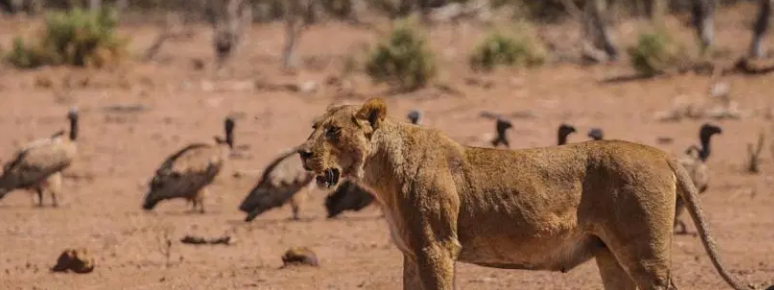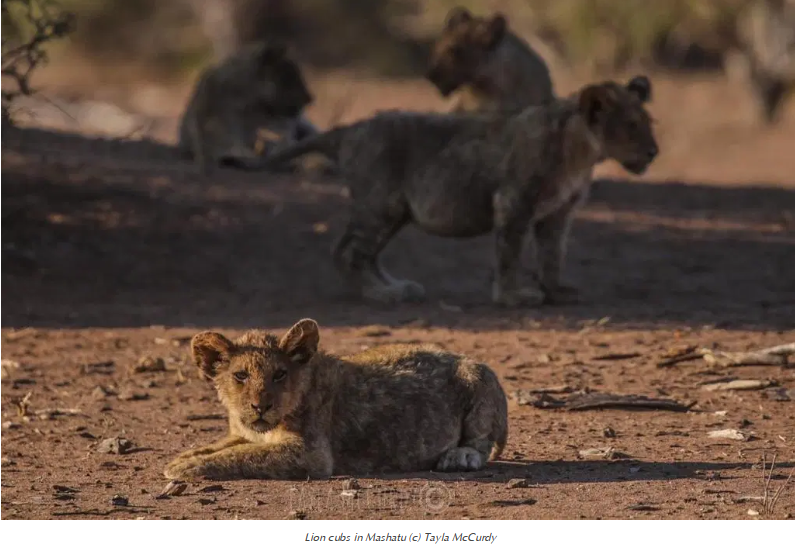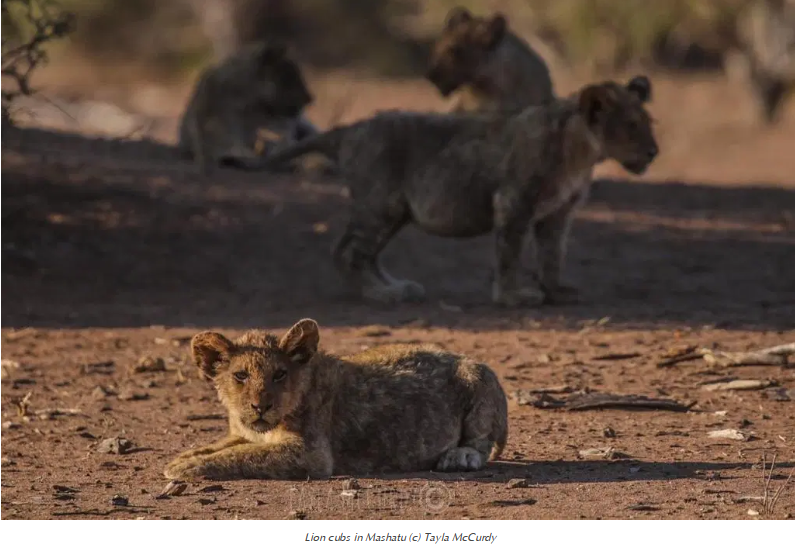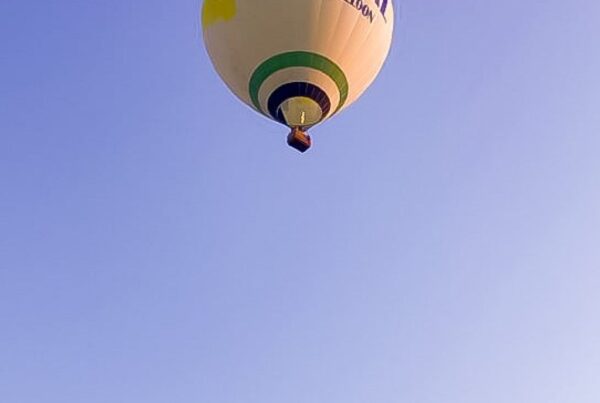 What’s it like on the first day of a safari guide course with EcoTraining? Check out this recent report from the South African bush:
What’s it like on the first day of a safari guide course with EcoTraining? Check out this recent report from the South African bush:
With a new group of students arriving at EcoTraining’s Mashatu Camp, the instructors needed to show them around the reserve so they could start orientating themselves. They started out on morning safari as usual. By 5:30 AM it was already 86°F and it only made sense to visit one of the major water points in the riverbed.
The instructors and students clambered over East-West Ridge, using rocky crossing which ensured that any students that were perhaps dozing off were now very much awake. Next up was the fever berry forest, where they stopped to talk about the medicinal uses of these trees and make spinning tops from their fruit. It’s a game played by local Tswana children and it always proves to be more difficult than anticipated.
Once moving out of the fever berry forest, a tawny eagle was spotted posing beautifully on a dead tree, one of a pair seen there regularly. Then someone spotted jackals in the distance and at that very moment, something caught their eyes . . .
There was movement inside the foliage lining the riverbank. Through her binoculars, instructor Tayla McCurdy observed there was a lioness coming their way with her cubs trailing behind. One of the students then informed Tayla that the jackals were feeding on some kind of carcass. It turned out to be a fully-grown eland — the world’s largest antelope!
As it was obvious the lioness and her cubs had already eaten — and with the temperature having climbed even more — the instructors figured that the big cats were probably looking for some shade to rest for the day. The lioness trundled along with her little ones in tow back towards the fever berry forest.
The instructors and students were in uncovered vehicles downwind from the stench of the carcass and so decided to move to a more comfortable location where they could get a good look but not interfere with the kill.
 Vultures arrived out of nowhere, circling at first and then landing one by one. This was an impressive but somewhat comical scene. Vultures are not the most agile birds when it comes to landing. They bound about at great speed before coming to a complete halt. Then, in a very gangster-like fashion, with wings spread, they run towards the carcass. There’s always lots of squabbling among the various species, with the most dominant one being white-backed vultures, with a few Cape vultures joining the feeding frenzy.
Vultures arrived out of nowhere, circling at first and then landing one by one. This was an impressive but somewhat comical scene. Vultures are not the most agile birds when it comes to landing. They bound about at great speed before coming to a complete halt. Then, in a very gangster-like fashion, with wings spread, they run towards the carcass. There’s always lots of squabbling among the various species, with the most dominant one being white-backed vultures, with a few Cape vultures joining the feeding frenzy.
But suddenly the lioness burst out of the bush and trotted angrily towards the scene, scaring away as many of the thieving birds as she could. Just as quickly as the vultures arrived, they vanished into thin air, except for a few brave souls that lingered in the nearby treetops.
 This behavior was a good demonstration of the hardships these animals face. Firstly, the lioness was on her own trying to successfully raise, protect and feed her cubs, who were also battling what looked like mange. Secondly, there’s always a constant battle between predator and scavenger. In the end, the vultures decimated the carcass and the lioness would have to hunt again. Luckily there are plenty of animals for her to stalk in Mashatu.
This behavior was a good demonstration of the hardships these animals face. Firstly, the lioness was on her own trying to successfully raise, protect and feed her cubs, who were also battling what looked like mange. Secondly, there’s always a constant battle between predator and scavenger. In the end, the vultures decimated the carcass and the lioness would have to hunt again. Luckily there are plenty of animals for her to stalk in Mashatu.
Every single person in the vehicle was in awe of the events unfolding in the bush that morning; some may have to wait years to witness a spectacle like that again.
If you want to experience adventures like this, or even have a dream of guiding people in the African wilderness, take a look at the various courses offer by EcoTraining, or contact enquires to learn more.





